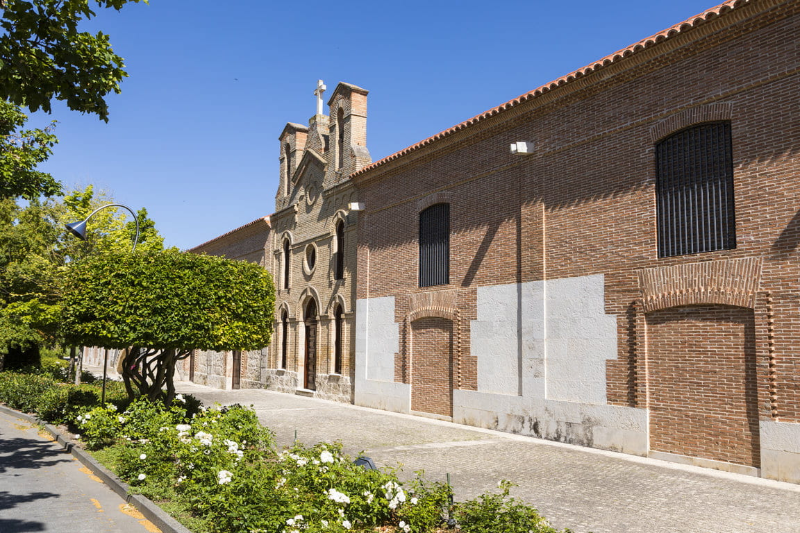2011 Vega Sicilia Oremus Eszencia
| Type of Wine | White |
|---|---|
| Country | Hungary |
| Region | Tokaj |
| Winery | Vega Sicilia |
| Vintage | 2011 |
| Grape | Tokay |
| Content (Alc) | 0.375 ltr (2.5%) |
| Drink window | 2021 - 2060 |
After the borders in Hungary opened to foreign investors, the Alvarez family, also known for Bodegas Vega Sicilia, bought this winery in 1993. Oremus is one of the great ancient producers of Tokaj, descriptions have been found from the 14th century. The Alvarez family has spared no expense to make this wonderful company an absolute top producer. In 2003 Oremus was named Winery of the year in Hungary. In addition to the classic large sweet Tokaj's, they also produce a dry white furmint that is not to be missed. It is characterized by strikingly complex fruit, vibrancy and fine new wood tones.
In 1991, the Spanish family Álvarez, owner of the famous Vega Sicilia, started negotiations to take over the vineyards in Tokaj. In 1993 Vega Sicilia acquired the company and the vineyards gave it the name 'Oremus'. 'Oremos' in Spanish means 'Let us pray' and this is Oremus in Latin.
The history of the vineyards of this Tokaj estate dates back to 1616 when Prince György Rákóczi acquired the vineyards of what is now Oremus.
In 1631, the Calvinist preacher Maté Szepsi Lackó made the first wine from botrytis-affected grapes. It became the first Aszu.
In 1993, Vega Sicila acquired the company and renamed it 'Oremus'. Much was invested in the renewal of the company and a technical team from Vega Sicilia saw to it that - with respect for tradition - a high-quality wine was made. oremus
Vega Sicilia now has five special domains in the group. Oremus plays a special role in this. They are wines with character and can be used gastronomically.
Eszencia is the richest and rarest of all Hungarian Tokaj wines. It is only made in exceptional vintages, when the harvest of the noble rot-affected grapes is very high. It is the natural essence of noble rotten grapes from which the juice seeps drop by drop, which is then transformed into the Oremus Eszencia: a legendary wine.
This exceptional nectar is different from the other Aszú wines. It is an unimaginably rich wine that is unique worldwide. It has a low alcohol content (1 to 3%) because the enormous amount of sugars fail to ferment completely, it is not rare that this wine contains 500 grams or more residual sugar per litre. The aszú grapes are harvested one by one. Each grape picker harvests between 5 and 10 kilograms of grapes per day. These grapes then rest for 15 to 20 days in the vinification rooms of Oremus, while the quantity of grapes increases every day until the end of the harvest. Meanwhile, the gentle pressure of the weight of the grapes causes the juice to slowly seep out. At the end of this period, the must is placed in a 50 liter glass container, in which it undergoes an extremely slow fermentation. After 2 years, the wine is put in 68 liter barrels ('átalag'), in which it is further matured. Afterwards, the wine matures further in the bottle, an aging process that can take several decades. A drink of the gods!
The 2011 Vega Sicilia Oremus Tokaji Eszencia is released in 2022. This is the top among dessert wines. This Eszencia possesses a magnificent scent of dried flowers, bergamot, dried pear, peaches, orange peel and candied ginger. Our entire palette is overwhelmed by a sweet mix of citrus fruits, salty mineral impressions and exotic spices, silky smooth in taste. An astonishing acidity contrasts with the 524 grams of residual sugar and an alcohol percentage of (only) 2.5%, which provides a remarkably fresh taste experience.

The history of Vega Sicilia dates back to 1864 with an unprecedented revolutionary step for the time. In that year, Eloy Lecanda founded the winery and imported 18,000 cuttings of cabernet sauvignon, malbec, merlot and pinot noir from Bordeaux. He plants these cuttings on his father's finca, just east of Valladolid. A long education in barrique and wooden foeders follows. Only in 1915 did the domain itself bottle the first Valbuena and Vega Sicilia.
Vega Sicilia establishes its reputation for good in 1929 at the World Exhibition in Barcelona. There, the years 1917 and 1918 receive an award. From that moment on, the company expanded its image to its current, almost legendary dimensions.
In 1982 a new era dawned with the acquisition of the domain by the current owner, the Alvarez family. The new owner immediately starts an extensive program of investments in the vineyards and cellars, without affecting the unique character of Vega. In that year the D.O. Ribera del Duera set. After the successful acquisition of Vega Sicilia, the Alvarez family is considering further expansion. They look for the best terroirs and add a number of famous or promising wine regions to their property in a relatively short time.
This domain, the most famous in Spain, was founded by Eloy Lecanda in 1864. Throughout its history, the domain has belonged to various families, but has always preserved its uniqueness and class. It all started in 1848 when Don Toribio Lecanda, a Basque, helped Marqués de Valbuena out of financial difficulties by buying a 2000 ha property. When Don Eloy Lecanda inherited this domain from his father on July 22, 1859, he decided to do something with it. In 1864 he goes to Bordeaux and buys 18,000 vines: Cabernet Sauvignon, Carmenère, Malbec, Merlot and Pinot Noir. When he planted it on his Finca Vega Sicilia, it was an act of infatuation for many. After all, the domain mainly lived from cattle breeding, orchards and the sale and production of ceramics.
When the Lecanda family also got into financial difficulties, a new lender made its appearance: the Herrero family. 15 years later, Antonio Herrero Velázquez acquired the entire domain. In 1905, management of the domain came into the hands of Txomin Garramiola. This Basque actually worked for the Riojabodega Cosme Palacio. Since it was difficult for him to continue to supply wine to his customers in Bilbao due to the phyloxera - Bilbao was at that time the nerve center for Spanish wines, especially those of Rioja - he suggested to the sons of Antonio Herrero, who had been responsible since 1901 goods for the domain, to rent the bodega to him for a term of 10 years. Palacio took Txomin as a confidant, he would make the wine. The style of this wine would be in line with the wine that Cosme Palacio customers were used to, i.e. Rioja style: long aging in wood and bottling when the orders arrived, not before. The domain then listened to the name Bodegas de Lecanda.
When the lease expired in 1915 and the domain was renamed Hijos de Antonio Herrero, the 3 brothers were able to convince Txomin to stay on. After all, it was a matter of prestige that the wine would be made further. From 1915, Txomin was able to make its own wines, which no longer served to compensate for the shortage of Rioja at Cosme Palacio. This meant the birth of Vega Sicilia Unico and Valbuena.
At that time, the Herrero family moved in the highest Spanish circles of aristocracy and industrialists. The bodega was a heavily loss-making activity, but the other revenues from the Finca had to close this gap. It was never his intention to make Vega Sicilia a wine that would be commercialized. After all, the wine was not for sale… and only served as prestige for the Herrero family. The wine could only be bought with friendship and not with money. If someone wanted to buy a bottle without being friends with the Herreros, they asked a price that was out of all proportion at the time. This is how the myth of the most expensive wine in Spain was slowly born.
The wine enjoyed great success throughout Europe in the 1920s. In 1933 Txomin dies and in 1952 the domain is sold to Prodes, a seed factory. However, there was no longer the enthusiasm of the Herrero brothers. Until the arrival of Jesús Anadón, who remained the administrator of the domain until its sale to the current owners.
The sale to the Alvarez family in 1982 was the best thing that could have happened to Vega Sicilia. The family bought Finca Vega Sicilia as an investment - the Eulen family business is mainly engaged in industrial cleaning and security services and is one of Spain's largest groups of companies. They realized that the thread of evolution had to be picked up and have invested in this field ever since. Pablo Alvarez heads the group Vega Sicilia.
Since 1998, Xavier Ausas has been head of the technical staff as an oenologist. Today Vega Sicilia is more alive than ever!
Varieties
The entire domain covers 1000 ha. 250 ha of these are vineyards, divided among Tinto fino (200 ha), Cabernet Sauvignon, Merlot and Malbec. A meticulous system was introduced for viticulture whereby production can never exceed 22 hl/ha (max. 2 kg of grapes per stick). The grapes are never harvested below 13% alcohol. 2200 sticks per ha are planted. The oldest vines are used for the Unico, the others for the Valbuena. The latter also contains more Merlot than Cabernet Sauvignon, while the Unico is just the opposite.
The whole area has a clay-limestone soil, with some mixed zones and part alluvial with sandy soils and boulders (from the domain towards the Duero). The climate is continental with Atlantic influences. Little precipitation (never more than 500 mm). On average 2200 hours of sunshine. The proximity of the Duero ensures that the morning dew has a refreshing effect on the vineyards.
The secret of Vega Sicilia lies in a complex of factors:
- Quality of the soil
- Climate (micro and meso)
- Large percentage of very old sticks
- Very low yield, 8 to 20 hectoliters per hectare, depending on the year
- Very long aging in barrel
- Perfectionism in all aspects
| Type of Wine | White |
|---|---|
| Country | Hungary |
| Region | Tokaj |
| Winery | Vega Sicilia |
| Grape | Tokay |
| Biological certified | No |
| Natural wine | No |
| Vegan | No |
| Vintage | 2011 |
| Drinking as of | 2021 |
| Drinking till | 2060 |
| Alcohol % | 2.5 |
| Alcohol free/low | No |
| Content | 0.375 ltr |
| Oak aging | Yes |
| Sparkling | No |
| Dessert wine | Yes |
| Closure | Cork |
| Parker rating | 96 |
| Tasting Profiles | Aromatic, Complex, Aged on wood, Powerful, Spicy, Rich, Round, Steenfruit, Full, Sweet |
| Drink moments | Indruk maken, Lekker luxe |














 Follow the latest news about all our wines, promotions, and new selections.
Follow the latest news about all our wines, promotions, and new selections.